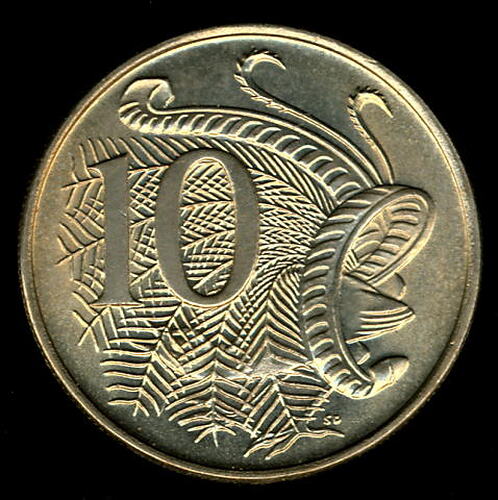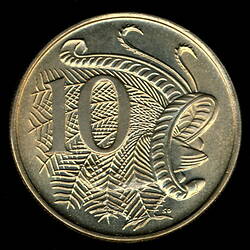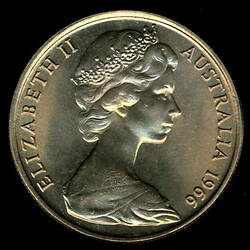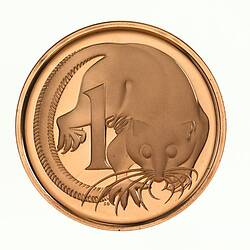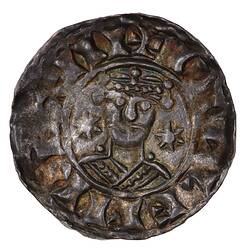Summary
Australia
Ten Cent coin 1966
Mint: Royal Mint, London
The Canberra mint struck 10,984,000 ten cent pieces in 1966 and the Royal Mint struck 30,000,000. There are no mint marks to differentiate the different productions, but the number of spikes on the lyrebirds plume before it curves up towards the rim (at 12 O'clock) varies. This coin came from London the plume has five spikes, the Canberra coins have four.
Physical Description
A cupro-nickel coin (23.6 mm diameter with milled edge) featuring on the obverse a diademed bust of Elizabeth II facing right; around, ELIZABETH II AUSTRALIA 1966. The reverse features a lyrebird seen facing left with its tail plumes expanded forward over its head. The denomination numeral 10 is above the head of the bird and the artist's initials SD are below, in the field beside its right foot.
Obverse Description
Diademed bust of Elizabeth II facing right; around, ELIZABETH II AUSTRALIA 1966
Reverse Description
Lyrebird seen facing left with its tail plumes expanded forward over its head. The denomination numeral 10 is above the head of the bird and the artist's initials SD are below, in the field beside its right foot.
Edge Description
Milled
Significance
For the introduction of decimal coinage to Australia the denominations of 5, 10 and 20 cents had exact pre-decimal equivalents in the sixpence, shilling and florin. These were not seen as important denominations for the first day of decimal changeover as there would be a long period when the two forms of coinage would circulate together. The Australian mints in Melbourne and Perth were fully employed striking the bronze one and two cent coins, while Canberra also worked on the silver 50 cent prior to C-day. An order was placed with the London mint for thirty million each of the five, ten and twenty cent coins. The Canberra mint 10 cent coins were struck in 1966, after C-day. John Sharples Oct. 2005.
More Information
-
Collecting Areas
-
Acquisition Information
Donation from Mr John P. Sharples - Museum Victoria, 17 Mar 1989
-
Date Issued
1966 AD
-
Issued By
-
Mint
-
Artist
-
Artist
-
Inscriptions
Obverse: ELIZABETH II AUSTRALIA 1966 Reverse: 10 SD
-
Denomination
-
Series
-
Material
Cupro Nickel
-
Axis
12
-
Classification
-
Category
-
Discipline
-
Type of item
-
Exhibition Collection Management
23.6 mm (Outside Diameter), 5.64 g (Weight)
Electronic scales 27 Oct 2005
-
Shape
Round
-
Keywords
